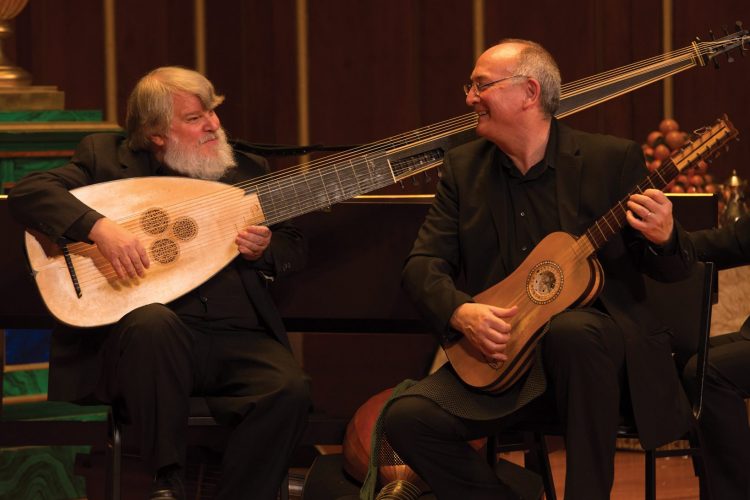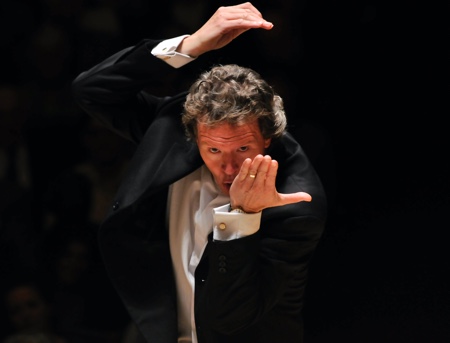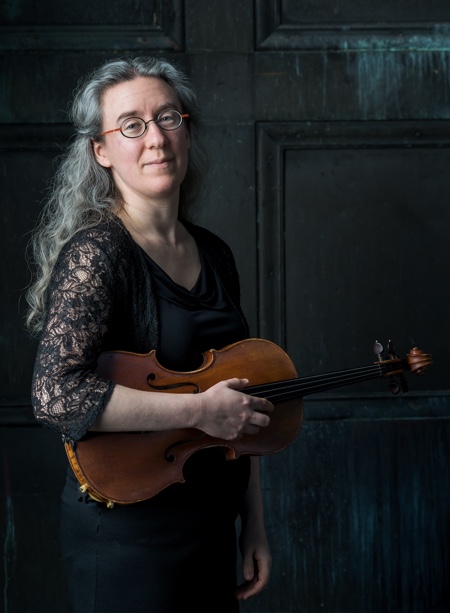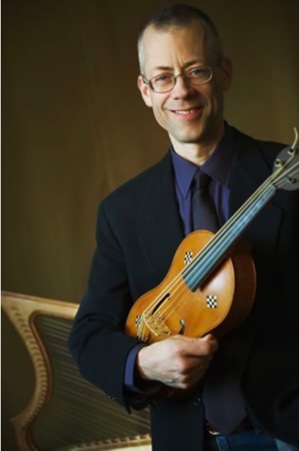
By Keith Powers
We’ve moved on from right or wrong. Now the issues are style and taste.
Period performance used to mean playing music in some authentic way — whatever that means. “I think we were stuck in aspic in the 1960s,” says lutenist Stephen Stubbs, artistic co-director of Boston Early Music Festival, regarding the authenticists. “Now, after close to 50 years of performance, let’s just take Monteverdi as it is.”
From Monteverdi to Mozart, the notion of period performance — or historically informed performance — has grown up. And all music, not just Renaissance and Baroque compositions, can benefit from the newfound adulthood.

“When we started we didn’t know what we were doing,” says Paul O’Dette, another lauded lutenist (and Stubbs’ artistic co-director at Boston Early Music Festival). “Those secrets were handed down, from teacher to student. We had no idea what the reeds were like, or the fingerings, or the breath pressure.
“Then there was a lot of work done, especially in Europe, and people became more proficient. People in the field made some amazing discoveries. Roger Norrington recognized so much in the music of Wagner and Schumann and Brahms. [John] Eliot Gardiner’s recording of the Verdi Requiem is mind-blowing. Ken Slowick with Holst and Stravinsky. The standards are so high now.”
And the progress has changed the way all styles of music have been approached.
When asked to comment on informed performance and contemporary music, Harry Christophers, artistic director of the Handel and Haydn Society, quickly points out, “I concentrate on Baroque and early Classical.” But, he adds, “Part of me thinks that the movement had run before it could walk. My reservations come when Baroque music doesn’t sound like Baroque music. The noises in the ’70s and ’80s were atrocious. Everyone was learning on the job.”
O’Dette could agree on that point. “The performance level has gone up so much,” he says. “I was close friends with Chris Hogwood when he was asked to record the complete Mozart symphonies on period instruments. Many of the players were new to the instruments, especially the winds, and some were learning fingerings in the recording studio. The critics generally disliked the results. The performance standards were not high enough. But the players weren’t ready to do what they were being asked by the record company.”

Virtually no one thinks of Baroque playing as atrocious anymore, and everybody seems prepared nowadays. And more and more, the information, techniques, and instrument advancements that have pervaded early music have found their way into contemporary repertoire.
“In the field, I think we are spreading enlightenment,” Stubbs says. “I think it’s an extremely good sign the professional world is keeping up with the times. I do Messiah with the Houston Symphony at Christmastime, and at one time a really high-powered symphony like that might eat up a Baroque guy like me. But now they have a bunch of clued-up players who had experience in Baroque music.
“From Monteverdi to Stravinsky, I don’t see a breaking point. There are avenues to explore in unexpected places. Myself, I have an open mind toward working with any music, so long as it is good. Just take a simple thing: In terms of balance, we’ve lost our way. Back in Wagner’s time, in front of a full orchestra singers could still project. Today’s instruments are so much louder that we need specialized singers.”
O’Dette believes the elements of performance practice have influenced the mainstream. “It’s shaking up the country club. For one, people are realizing those dogmatic ideas about tempo are not really helpful for music. It gives you more options, not fewer. Performance practice gives you more freedom. Musicians took ownership of the music they were playing, and made it their own.”
“I feel very strongly that players have got to think for themselves,” Christophers says. “It’s a bit like a student who goes to university and comes out all crammed full of knowledge.”
Anne Azéma, artistic director of the Boston Camerata, says she tells people, “I make music of earlier styles and of later styles. It was important two generations ago, to acquire the appropriate instruments, and the technical tools, to make the music sound with its own weight and colors. We’ve spent lots of energy trying to prove something wrong or right. I don’t think there’s anything wrong or right. All styles serve each other, and are necessary. Barriers are there that sometimes have to fall.”

Scott Metcalfe, founder and director of the vocal ensemble Blue Heron, finds the truth in the score.
“I’m not that interested in first-performance authenticity,” he says. “It’s a marketing tool from the ’80s that has outlived its usefulness. Early music should be liberating, with possibilities that you wouldn’t have thought of. What ought to distinguish performance is a commitment to the specifics of a composer, or of a piece. I want to see what’s unique to each work, what the music asks of you.”
In America at least, more players feel comfortable playing both baroque instruments and contemporary instruments — and moving easily between both.
Sarah Darling, who plays both baroque violin and contemporary viola, balances her time “about 50/50” between cutting-edge groups like A Far Cry and the period-instrument orchestra Boston Baroque. In fact, “except for Christina Day Martinson [concertmaster of Boston Baroque], all the principals in Boston Baroque are members of A Far Cry.” It’s a fitting symbol of the situation in the U.S. — at least in an early music hotbed like Boston — but does not necessarily reflect what’s happening across the pond.
“In America, it’s a practical thing, and I think there is a danger in it,” Christophers says of players dipping in both the Baroque and contemporary styles. “It’s a fact of life, but that is not the case in Europe. In every major concert hall, they will have a permanent amount of period music programmed. That is not the case in the U.S. Modern orchestras play Stravinsky and Brahms, and play them damn well. I don’t do Beethoven; I don’t feel that empathy. I’ve got plenty of music; God knows how many Haydn symphonies there are.
“We are really just getting to understand Handel,” he continues. “And Mozart and Haydn, and also delving into phenomenal composers who hadn’t see the light of day. I think the tendency for me is, if we go into Mendelssohn and Brahms and Berlioz, that we will move too quickly.”

O’Dette agrees, but only in part. “The standards are so high now, especially in Europe,” he says about the risks of shifting back and forth in performance styles. “But if I were a violinist, wouldn’t I want to play everything? It’s become more and more common. Look at Juilliard, with the success of the Baroque program. Doing everything gives me more job prospects, and some people like a varied diet. But some people like to specialize.”
“The styles are equally meaningful to me,” Darling says. “I sense that people are profoundly moved by music, no matter what style you’re approaching it with. You start from looking at what was done in these time periods, what has been done since, and wonder what style you would pursue. There is not one perfect style for any moment — not even now. You find yourself getting fascinated with different ways of playing Baroque music. You can play it in the style of Pablo Casals. We did a whole concert dedicated to the Casals Brandenburgs once, and the audience loved it.”
That truly makes it sound like the musicians have taken control. “Rather than ‘historically informed performance,’” Stubbs suggests, “why don’t we just go with ‘informed performance’?”
Keith Powers covers music and the arts for GateHouse Media and WBUR’s ARTery. Follow @PowersKeith; email to keithmichaelpowers@gmail.com

